

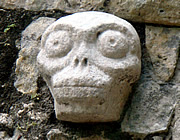
We loved Cobá, a sprawling, jungle-hidden Mayan site with some wonderful buildings.
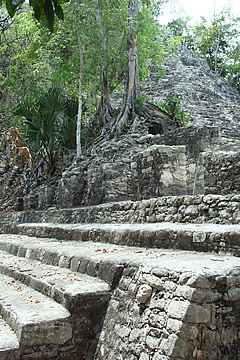
We had the option to stay and look around Chichen Itza before leaving but decided we'd seen enough and had an early start. On the way we asked our guide if it would be possible to visit Coba instead, before continuing to Tulum. He checked with the agency and, for an extra fee, said that was fine so we fitted one more Mayan site in than we'd anticipated. We really like the jungley ones that fewer people visit and Coba sounded wonderful.
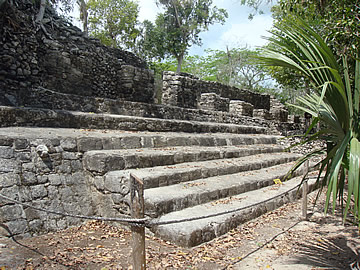
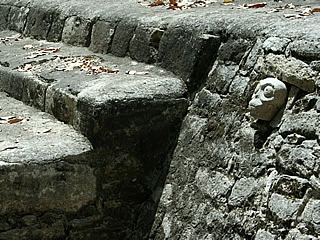
It was only a 3 km detour from our route so we were there quite early and hired a tricycle rickshaw as the site is vast. This turned out to be a very good idea - apart from being great fun - as the various remains of Coba are widely spread out.
Coba was at its peak in the eighth and ninth centuries when it covered around 70 sq km with a population probably well in excess of 50,000. It is located near four lakes with numerous sacbés (Mayan roads) criss-crossing the site. It was in conflict with Chichen Itza for dominance of the region and was eventually defeated in 860A.D. Coba revived to a certain degree, perhaps even enduring until the Spanish conquest, but it never regained its former dominance in the region.
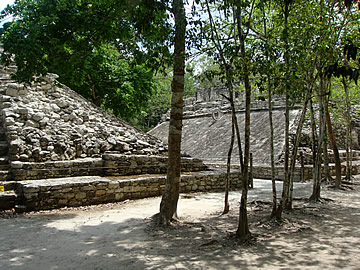
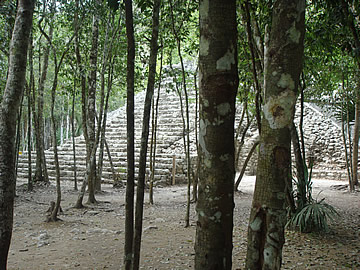
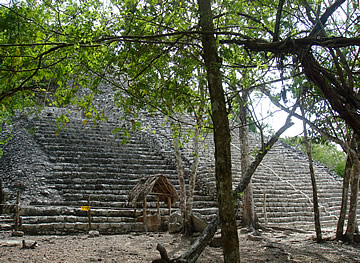
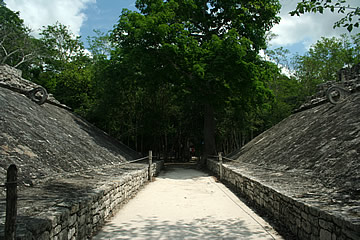
Near the parking is what was the heart of the city in Classic times, now called the Coba Group which includes the pyramid and temple known as La Iglesia and a nice example of a ball court. A side staircase to La Iglesia is flanked by skulls, the risers of the staircase also show evidence of hieroglyphs. Both the rings of this ball court are intact and steps lead to the top where, it is supposed, spectators could watch the ritual game.
We made our way through the jungle to the Nohoch Mul group of structures at the north east of the site and the 42m high pyramid called Ixmoja (also called El Castillo).
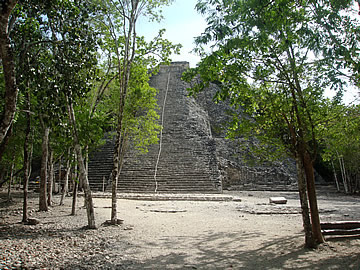
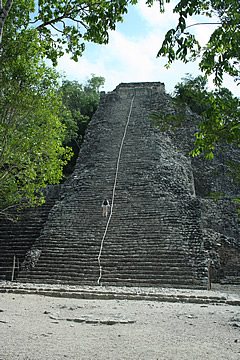
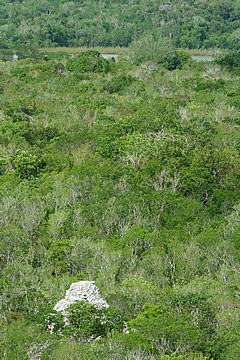
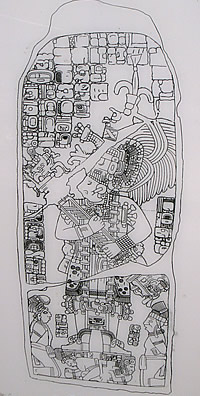
Ixmoja is the tallest pyramid in the Yucatan peninsula - almost 10m higher than El Castillo at Chichen Itza.
We climbed to the top from where the views over the jungle canopy were fantastic.
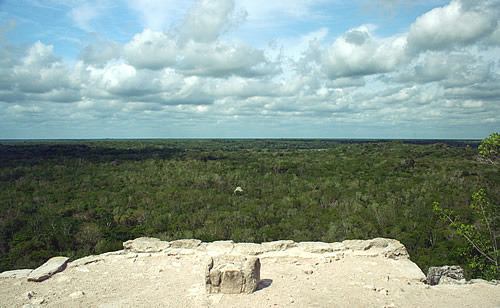
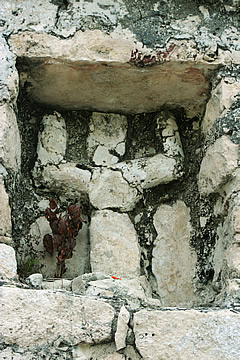
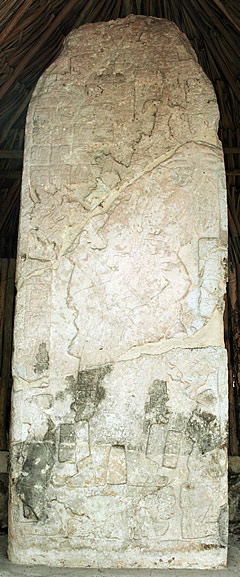
On the top of the pyramid is a small temple. Its facade has two curious stucco figures below the roof line, the so-called "diving gods".
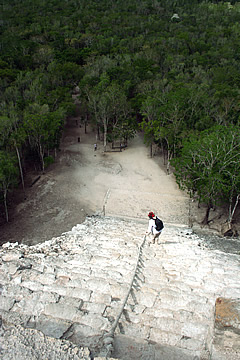
There is a broken stela at the bottom of the steps but a better-preserved one nearby, stela 20, broken but repaired and there's a very helpful drawing beside it!
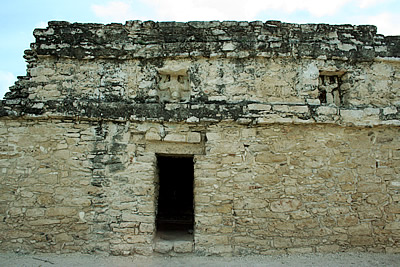
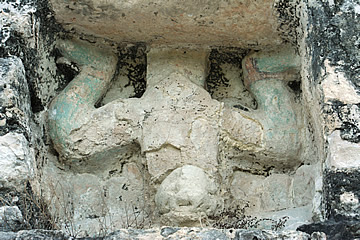
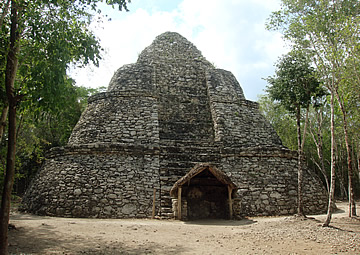
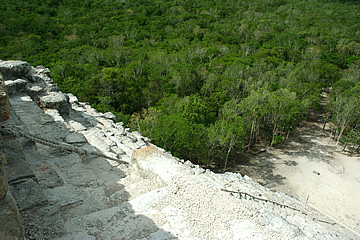
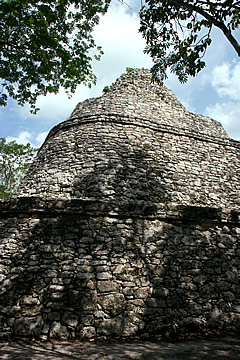
From here we whizzed down to the Group of the Paintings and the Xaibe or Crossroads Temple, a beautiful stepped, oval pyramid with a staircase leading to the top. Our guide told us it was an observatory. The only other oval pyramid we have seen is at magnificent Uxmal.
At the foot of the staircase leading up the front face of Xaibe is a modern-day shrine where hunters burn a candle and pray to the Virgin Mary for good hunting.
The group also includes another great example of a ball court, this one with very shallow platforms on the edge of the playing alley.
Set into the sloping walls are panels, one is of a kneeling prisoner, and a central panel on one of the walls is composed of a grid of hieroglyphs.
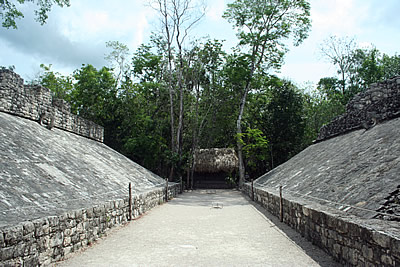
Set into the floor of the playing alley is a skull and a round panel which appears to show a seated headless figure!
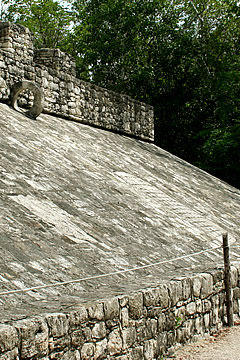
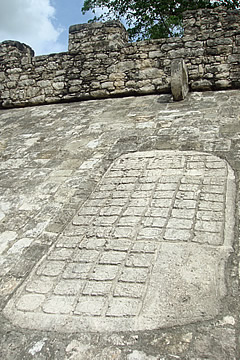
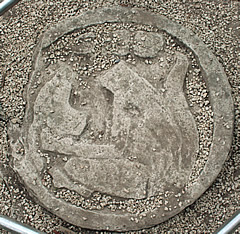
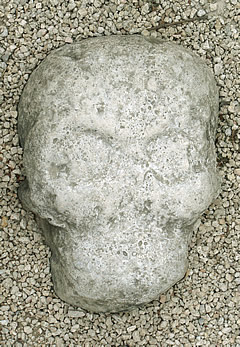
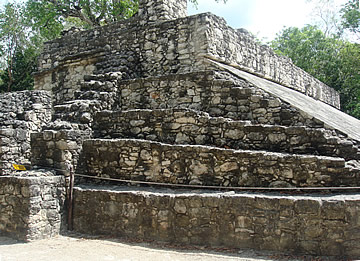
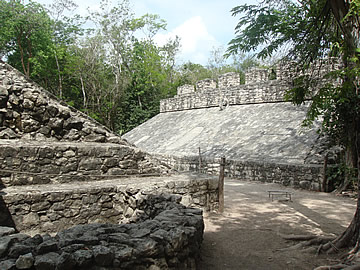
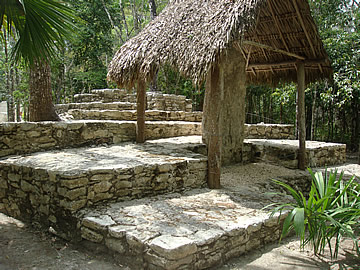
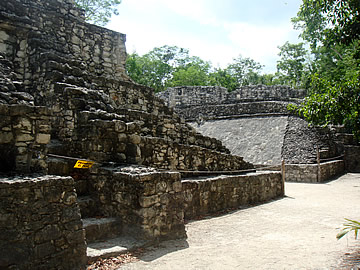
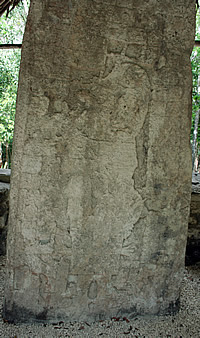
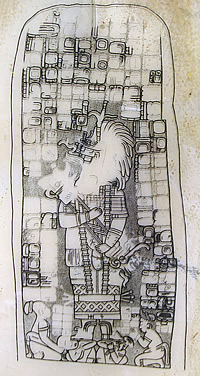
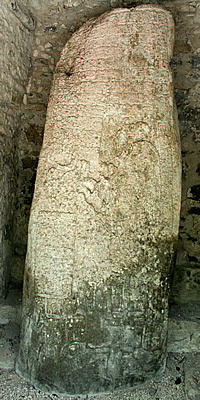
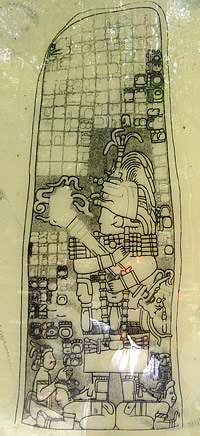
Onward to the Macanox Group where there are a lot of stelae. It took about ten minutes to get there on the tricycle rickshaw so quite a distance. The tracks through the forest are along the original sacbeob.
Many of the stelae show an ornately dressed figure, probably the ruler of the time, holding a bar, possibly a double-headed serpent bar, and standing on slaves or captives with others kneeling to the side. The size of the ruler is huge compared to the size of the slaves to reflect his importance. Hieroglyphs generally refer to important dates such as the accession of the particular ruler.
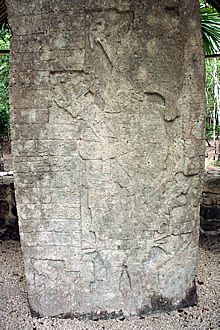
Stela 1 is of particular importance. The front, back and sides are covered with carvings including 313 hieroglyphs. An extremely long period of time is represented in the hieroglyphs.
The Mayans used various names for different periods of time such as tuns and baktuns, in a similar way that we use days, months, years, decades, etc. (see Quirigua for a brief explanation).
On stela 1 the huge time period, called a Long Count date, translates as 13.13.13.13.13.13.13.13.13.13.13. 13.13.13.13.13.13.13.13.13.0.0.0.0 - in our time scale this would represent unimaginable billions of years!
There is speculation that this was some kind of teaching area, though probably not a school as such but for passing on knowledge of astronomy.
Directly in front of one stela is an unusual cross-shaped structure raised on a platform and almost aligned with the cardinal points. We puzzled over what it could be, surely something to do with astronomy.
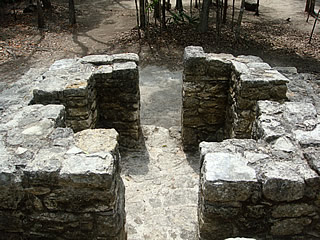
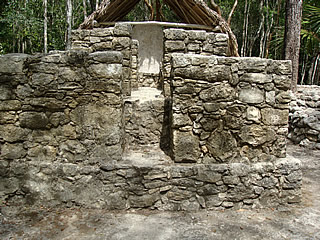
We thoroughly enjoyed our two hour impromptu visit to Coba. It's a very peaceful place, with only the sounds of birds in the trees, and lit by dappled sunlight it has bucket loads more atmosphere than Chichen Itza.